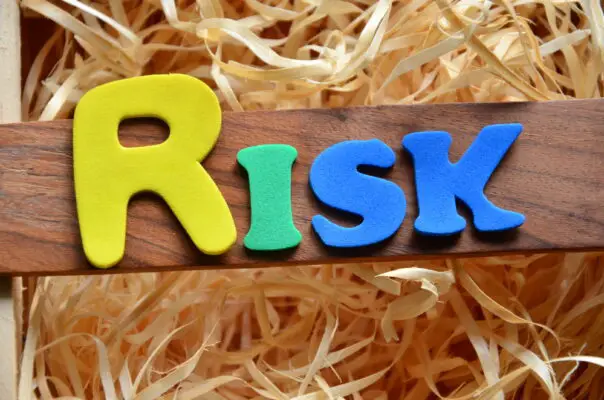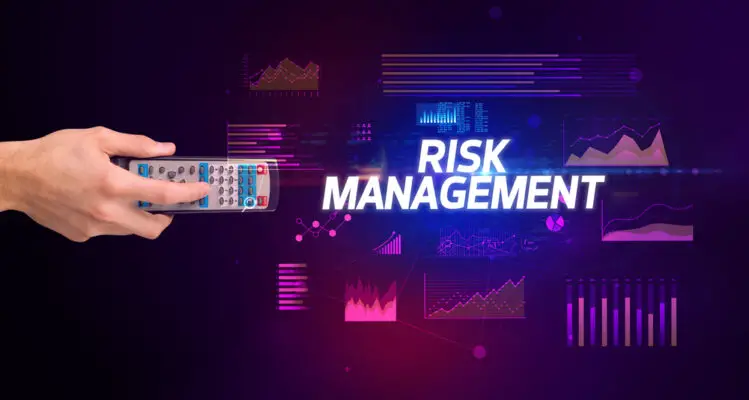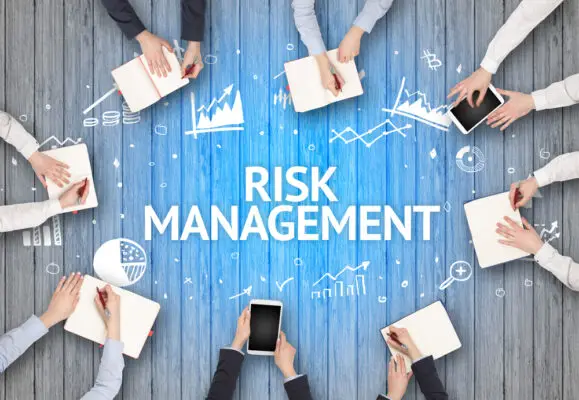Petroleum exploration is a high-stakes, high-risk industry that offers significant rewards but also involves considerable uncertainties. The success of an exploration venture depends on the ability to identify, analyze, and manage the various risks associated with petroleum exploration activities.
Geological Risk analysis and management of petroleum exploration ventures
Geological risk is the uncertainty associated with the presence of hydrocarbon deposits in a given area. This risk arises from the Earth’s subsurface’s complex nature, making it challenging to accurately predict the presence, size, and quality of petroleum reservoirs. Key components of geological risk include:
a. Source rock: The presence of organic-rich rocks capable of generating hydrocarbons is essential for the formation of a petroleum system.
b. Reservoir rock: The existence of porous and permeable rocks that can store and transmit hydrocarbons is vital for a successful exploration venture.
c. Trap and seal: The presence of structures that can trap hydrocarbons and prevent their migration is crucial for the accumulation of economically viable deposits.
To mitigate geological risk, companies utilize state-of-the-art technologies such as seismic surveys, gravity and magnetic measurements, and geochemical analyses to gather subsurface data. This information is then used to build geological models, which help identify and prioritize prospective exploration areas.
Technical Risk analysis and management of petroleum exploration ventures
Technical risk relates to the challenges of drilling, extracting, and producing hydrocarbons from a reservoir. These risks can arise from various factors, including drilling complications, production difficulties, and infrastructure constraints. Key aspects of technical risk include:
a. Drilling challenges: Drilling in challenging environments, such as deep water, high-pressure, or high-temperature reservoirs, can lead to technical difficulties and increased costs.
b. Production challenges: Reservoir characteristics, such as heavy oil, low permeability, or complex geological structures, can pose challenges for extraction and production.
c. Infrastructure constraints: Inadequate or non-existent infrastructure, such as pipelines, processing facilities, or transportation networks, can hamper the development and production of a petroleum discovery.
To manage technical risks, companies invest in research and development, adopt advanced drilling and production technologies, and collaborate with industry experts and service providers
The petroleum exploration industry is always a high-risk environment with companies seeking to maximize rewards from their investments. Risk analysis and management of these business ventures involve numerous complex factors that must be considered in order for businesses to remain profitable and safeguard the interests of their shareholders.
This blog post will help you understand the various components key concepts of risk analysis, explore what risk analysis and management mean for petroleum exploration ventures, and how it can help maximize profitability.
It provides an overview of how it works and discusses potential strategies on how to effectively manage such risks associated with oil prospecting activities.

What Are Risk Analysis and management of petroleum exploration ventures
Risk analysis and management of petroleum exploration ventures refer to the systematic identification, assessment, prioritization, and mitigation of risks associated with the exploration and extraction of hydrocarbons, such as oil and natural gas. These processes aim to reduce uncertainties, minimize potential losses, and improve petroleum exploration projects’ overall success and sustainability.
Risk analysis assesses the likelihood of an unfavorable outcome from an oil and gas exploration venture. In evaluating potential risks before they occur, companies can better prepare themselves to address them if they do arise.
This process typically involves collecting data on the venture’s potential risks, analyzing that data to identify potential sources of risk, and developing strategies to mitigate or eliminate those risks.
Risk management involves the following steps:
Identifying risks:
The first step is to recognize the various risks associated with petroleum exploration, which can be geological, technical, economic, regulatory, or environmental in nature.
Recognizing various risks associated with petroleum exploration is an important first step. These risks can come in the form of geological, technical, economic, regulatory, and environmental factors.
For example, geological risks could include being unable to locate oil reserves or a lack of accessible roads leading to potential sites. Technical risks can range from faulty equipment to a lack of knowledge of certain operations.
Economic risks may involve not having the resources to finance exploration projects or the fluctuating costs associated with exploration activities. Regulatory and environmental considerations must also be taken into account when it comes to exploring for oil, such as getting proper permits or abiding by local laws and regulations, as well as assessing the potential impacts of extraction activities on the environment.
This step involves evaluating each identified risk’s likelihood and potential consequences. Quantitative and qualitative methods can be used to assess the probability and potential impact of these risks on project objectives.
Risk assessment should be continuous, with evaluations and analyses conducted before, during, and after the project.
Quantitative methods are typically used to measure the probability of a risk event occurring, while qualitative methods are used to measure the severity and impact of a risk. A combination of both methodologies should be employed in order to provide an accurate assessment of any given risk.
Additionally, in order for risk assessment to be effective, it’s important that stakeholders have a clear understanding of the context and their individual roles in relation to the overall project objectives.
The process of risk assessment focuses not only on identifying potential risks or threats but also on determining strategies for mitigating those risks. This will ultimately help increase efficiency in time and resources as well as ensure that projects remain within the scope and meet expected outputs.

Prioritizing risks:
Based on the assessed likelihood and consequences, risks are prioritized to determine which ones require the most attention and resources for effective management.
Risk analysis and management in petroleum exploration ventures are crucial for optimizing project outcomes, minimizing financial losses, and reducing environmental impacts.
Properly assessing and ranking the potential risks associated with projects or operations can help ensure that resources are being used efficiently and effectively.
Risk assessment should be conducted on a regular basis to ensure that risks are appropriately prioritized. This includes gathering data from sources such as surveys, interviews, or historical records. By understanding which potential risks pose the most significant threat to operations or projects, teams can plan for them accordingly and prioritize their mitigation strategies.
It’s important to consider several factors when ranking risk, including severity, probability of occurrence, cost of prevention or response measures, ease of implementation of countermeasures, the longevity of risk’s effects, the importance of function affected by the risk, and overall financial impact if the risk event were to occur.
Appropriately ranking these factors will help businesses make informed decisions when it comes to prioritization and selecting suitable mitigation strategies.
Mitigating Petroleum exploration ventures risks
Mitigating the risks associated with petroleum exploration ventures is essential for any business or organization operating in the oil and gas industry. Teams should consider a few principles when developing an effective risk management plan.
The first principle is identifying potential risks related to safety, environmental concerns, or technological and operational challenges. Once these potential risks have been identified, they should be assessed to determine their likelihood of occurring and the severity of their potential impacts.
This assessment process will also help inform risk mitigation strategies by providing insight into how different countermeasures may affect the probability of a risk event occurring.
Once risks have been identified and assessed, teams can develop suitable strategies for mitigating them. These strategies could include increasing safety protocols, investing in new technologies or resources, implementing regular maintenance checks, or establishing contingency plans in case things don’t go according to plan.
It’s important to ensure that all stakeholders are aware of these mitigation strategies so they can properly prepare and respond to any potential issues that may arise during the operation phase.
Monitoring petroleum exploration risks
Monitoring the risks associated with petroleum exploration ventures is a key component of any effective risk management plan.
The first step in monitoring risk is to develop an ongoing system for collecting data related to potential risks such as safety issues, environmental concerns, or operational problems. This data should be tracked regularly to identify patterns or trends that could indicate a higher likelihood of a risk event occurring.
Teams should also consider conducting regular site inspections or audits to check for potential hazards that may not have been identified previously.
Other strategies for monitoring risk include staying informed about the latest safety protocols and regulations set in place by governing bodies, developing contingency plans in case events don’t go according to plan, and listening to feedback from team members on-site who may have noticed warning signs or red flags during their work.
Exploration risk analysis
Exploration risk analysis is an important tool for assessing the potential of a mineral deposit. It helps to identify and quantify the risks associated with exploration activities, such as prospect evaluation, prospecting, and exploration economics.
It is the art and science of delving deep into the unknown, deciphering the hidden secrets of the Earth’s subsurface, and making informed decisions that can potentially unlock vast hydrocarbon resources.
This captivating process contributes to the energy sector’s sustainable growth, fosters innovation, stimulates economic development, and helps satiate the world’s ever-increasing thirst for energy.
Risk analysis is used to evaluate the probability of success and failure of a given project or venture. This process involves assessing the likelihood of certain outcomes based on data and information gathered from various sources. The results are then used to determine each situation’s best course of action.
In addition to evaluating the probability of success or failure, risk analysis also helps to identify areas where additional research may be needed. For example, it can help identify areas, where further geological studies are necessary or more detailed economic analyses may be required.
Risk analysis is also used to assess the potential value of a mineral deposit. This process involves analyzing the tonnage and grade distributions of a particular deposit as well as its location relative to other deposits in the area.
Overall, exploration risk analysis is essential for making informed decisions about mineral exploration projects and ventures.
Petroleum geologists
As a Petroleum Geologist, you are responsible for exploring and producing oil and natural gas resources. Your job involves using scientific methods to examine the evidence, identify sites that should be explored, analyze geological information, and determine the best locations to look for oil.
Petroleum Geologists typically work for oil and gas companies, and their average annual salary in the US is $111,493. To become a Petroleum Geologist, you need to have a degree in geology or a related field. You may also need to obtain certifications from organizations such as the American Association of Petroleum Geologists (AAPG).
The AAPG is an international organization with over 38000 members in 100-plus countries. It provides educational resources and opportunities for networking with other professionals in the field. Additionally, it offers certifications such as Certified Petroleum Geologist (CPG) which can help you advance your career.
Petroleum geologists play an important role in the petroleum risk analysis process. They are responsible for identifying potential oil and gas deposits, analyzing geological information to determine the best sites for exploration, and assessing the potential risks associated with each site.
The first step in the process is to identify potential oil and gas deposits. Petroleum geologists use a variety of methods, such as seismic surveys, core sampling, and remote sensing to locate possible sites.
Once a site has been identified, they analyze the geological data to determine if it is suitable for exploration. This includes examining rock formations, mineral samples, and other areas on land or offshore that may contain oil or natural gas reserves.
The next step is to assess the potential risks associated with each site. Petroleum geologists evaluate factors such as environmental impact, economic feasibility, and safety concerns before an economic assessment and recommending a course of action. They also consider factors like local regulations and market conditions when making their assessments.
Finally, petroleum geologists provide advice on how best to exploit any discovered resources. This includes advising on drilling techniques, production processes, and storage methods that will maximize efficiency while minimizing risk.
Overall, petroleum geologists play an essential role in ensuring that oil and gas companies make informed decisions about their operations.
How Is Petroleum Risk Managed?
Once the sources of risk have been identified through risk analysis, companies need to develop strategies for managing those risks. These strategies typically involve implementing processes and procedures designed to reduce or eliminate the potential for an unfavorable outcome.
For example, a company may decide to invest in technology that will improve its drilling operations or establish safety protocols that all personnel must follow when operating equipment. Companies can also purchase insurance policies that will provide coverage for certain types of losses associated with their operations.
Petroleum risk management is an important part of the oil and gas industry. It involves identifying, assessing, and mitigating risks associated with producing, transporting, and storing petroleum products.
Risk management strategies can help companies reduce their exposure to potential losses due to unexpected events or changes in market conditions.
The first step in managing petroleum risks is to identify them. This includes understanding the different types of risks that can affect operations, such as economic, political, environmental, price, supply, demand, cost, safety, and third-party risks.
Once these risks have been identified, they must be assessed to determine their likelihood of occurring and their potential impact on operations.
Once the risks have been identified and assessed, they must be mitigated through strategies such as establishing controls to prevent future oil spills or providing appropriate incentives to change the safety culture.
Companies should also consider implementing industry standards for best practices in order to ensure that all operations are conducted safely and efficiently. Additionally, companies should use a risk management platform to monitor their operations and ensure that any changes are properly documented.
Risk Management of petroleum exploration ventures
The exploration process requires significant financial investment and carries with it the potential for great reward and the risk of failure. Risk management is essential to any petroleum exploration project, as it helps identify and mitigate potential risks that could lead to costly losses.
Risk management begins with identifying all potential risks associated with a project. This includes assessing environmental hazards, such as seismic activity or flooding, as well as economic factors, like changes in oil prices or political instability.
Once these risks have been identified, strategies can be developed to reduce their impact on a project. For example, companies may diversify their investments across multiple projects or regions to spread their risk exposure. They may also invest in insurance policies to protect against unexpected losses due to natural disasters or other unforeseen events.
In addition to managing external risks, companies must also consider internal risks when planning an exploration project. This includes ensuring that personnel is properly trained and equipped with the necessary safety equipment and supplies for a successful operation.
Companies should also have systems in place for monitoring progress and budgeting costs throughout the life of the project.
The Benefits of Risk Analysis and Management of petroleum exploration ventures
The primary benefit of conducting a thorough risk analysis before any venture is that it allows companies to identify potential risks early on to develop effective strategies for managing them before they become costly problems.
Additionally, by clearly understanding the various risk sources associated with their operations, companies are better positioned to make informed decisions about where best to allocate resources for optimal results.
Finally, conducting regular risk analyses helps companies stay up-to-date on trends in their industry so that they can adjust their strategies as needed in order to remain competitive.
Here are some of the key benefits that risk analysis and management offer:
Identifies Potential Risks:
Conducting risk analysis helps organizations identify potential risks that could affect the success of their operations. This helps inform decisions on how to best proceed with exploration efforts as well as how much money should be invested in safety protocols.
Develops Protective Measures:
Understanding what risks exist allows companies to develop strategies and measures to reduce or eliminate those threats from occurring. Companies can install fail-safe systems, provide additional training to personnel, implement more stringent safety protocols, and apply updated technologies. All of which contribute towards mitigating any foreseeable risks.
Improves Performance:
By taking precautionary measures that help minimize the dangers associated with petroleum exploration, organizations will achieve improved performance in terms of health and safety as well as efficiency and profitability.
In the dynamic realm of petroleum industry practices, exploration cash flow models serve as invaluable tools that help companies make informed decisions and optimize their investments. Through incorporating best practices and insights from reputable sources like the United States Geological Survey, these models provide a robust foundation for analyzing the financial viability of potential prospects.
Clarifies Expectations:
Risk management helps create clarity around expectations by outlining objectives, tasks required to meet such objectives, responsibilities associated with each task, and deadlines for completion.
This provides direction to personnel while maintaining accountability standards at each stage of the process, thus ultimately guaranteeing successful outcomes for all stakeholders involved in the venture.
Using a risk analysis approach is essential for any organization looking to become involved in petroleum exploration projects. Being aware of potential dangers enhances decision-making capabilities, thus ensuring informed actions produce positive results for everyone concerned over time.
The exhilarating world of petroleum exploration ventures is driven by the relentless pursuit of promising exploration prospects and plays, where meticulous risk analysis becomes the key to unlocking hidden treasures beneath the Earth’s surface.
Systematic risk analysis and portfolio management are essential cornerstones supporting prospect success of a successful petroleum exploration business. This enables industry leaders to navigate the labyrinth of geological uncertainties and regulatory complexities versus systematic exploration.
Based on industry experience and a keen focus on balancing exploration plays, risk analysis, and strategic portfolio management. The trailblazers redefine the petroleum industry’s boundaries, transforming how we approach systematic exploration and adding exploration portfolio management to their assets.
As petroleum exploration ventures author of their own success stories, these companies adeptly harness the power of data, economic analysis, technology, and innovation to fuel the engines of economic growth and propel us toward a sustainable and energy-rich future.
Challenges in petroleum exploration venture risk analysis
Analyzing the risks associated with petroleum exploration ventures is a complex task that requires teams to collect and interpret data from multiple sources. This can include safety reports, environmental impact assessments, economic measures, or technological reviews.
In addition, teams must consider external factors such as changes in legislation or increasing competition in the industry when assessing potential risk levels.
A key challenge in risk analysis is identifying all of the potential risks that could impact a project or operation. This can be difficult as some risks may not be immediately evident.
Teams should look at past incidents or similar projects to identify any possible hazards or blind spots that may have been missed in initial assessments.
Another challenge teams face is accurately estimating the likelihood of a risk event occurring and determining its severity. This process requires teams to use expert judgment and historical data to accurately understand what might happen if certain countermeasures are not taken.
It’s important for teams to ensure that their assessments are unbiased and take into account all relevant information so they can properly prepare for any possible threats.

Conclusion
Risk analysis and management are essential components of any petroleum exploration venture. By taking the time upfront to analyze potential sources of risk and develop effective strategies for mitigating them, companies can maximize their chances for success while minimizing their exposure to costly losses due to unforeseen circumstances.
Through careful planning play analysis and diligent execution, petroleum exploration ventures can be both profitable and safe endeavors – all thanks to sound risk analysis and management practices!

Chris Ekai is a Risk Management expert with over 10 years of experience in the field. He has a Master’s(MSc) degree in Risk Management from University of Portsmouth and is a CPA and Finance professional. He currently works as a Content Manager at Risk Publishing, writing about Enterprise Risk Management, Business Continuity Management and Project Management.


